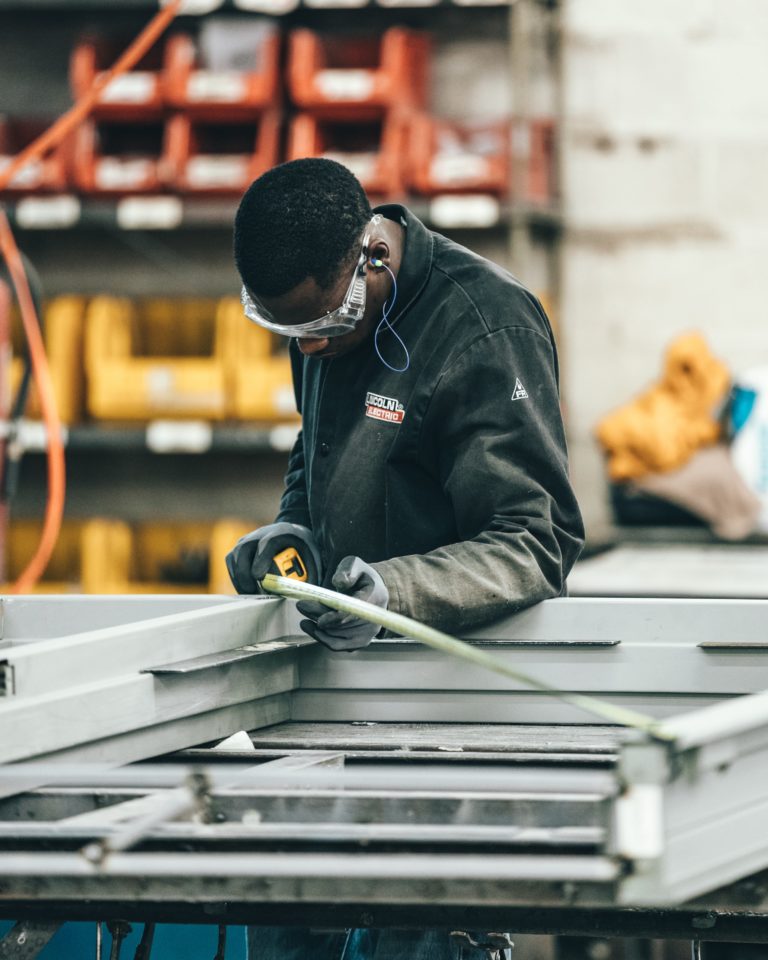Fair Work recently increased Manufacturing Award Rates by 2.5%. These rates are included below and come into effect in the first full pay run after July 1st 2022.
One of Australia’s oldest industries, manufacturing still makes up a sizable 6% of the nation’s economy, employing more than 850,000 people. While manufacturing employment has declined from its height in the 1960s, manufacturing output has still quadrupled in that time. Manufacturing is covered by the Manufacturing and Associated Industries and Occupations Award 2020. Employing people in the sector can be complicated, with additional factors like apprenticeships, as well as dangerous and technical work to be taken into account when paying staff for the time they work.
About the Manufacturing Award
The Australian industrial relations framework is unique in that it makes use of what are called “award” rates. These rates are determined by the Fair Work Commission each year and aim to strike the right balance between a business being able to make a profit and fair wages for employees. Because of this, different awards have different rates of pay.
The Manufacturing and Associated Industries and Occupations Award 2020 covers one of the widest range of occupations of any award. This includes the vast majority of workers involved in any kind of manufacturing. For a full definition of the scope of the award, look under “2. Definitions and interpretations”.
The complexity of the Award System
The award system can be difficult to navigate. The Manufacturing Award has between 180-200 individual rules, covering pay rates for things like overtime, shift breaks, public holidays, and late-night shifts. These differing rates must be implemented at the correct time. A 2019 study by the Australian HR Institute revealed that 33% of Aussie businesses admitted to making errors on every single monthly pay run.
One of the biggest reasons for this is the complexity of the award system. Many businesses still manually calculate which rates apply using the Fair Work Commission’s calculator, which can be complex and error-prone.
Manufacturing and Associated Industries Award Pay rates
The Manufacturing Award pay rates for 2021 were updated on the 1st of Jule and are listed below.
| Position | Hourly pay Rate | Saturday | Sunday | Public Holiday |
| Engineering/Manufacturing Employee – Level 1 | $21.38 | $32.07 | $42.76 | $53.45 |
| Laboratory tester | $23.52 | $35.28 | $47.04 | $58.80 |
| Engineering/laboratory technician – level I | $25.54 | $38.31 | $51.08 | $63.85 |
| Leading technical officer | $32.08 | $48.12 | $64.16 | $80.20 |
| Position | Hourly pay Rate | Saturday | Sunday | Public Holiday |
| Engineering/Manufacturing Employee – Level 1 | $26.73 | $40.10 | $53.46 | $66.83 |
| Laboratory tester | $29.40 | $44.10 | $58.80 | $73.50 |
| Engineering/laboratory technician – level I | $31.93 | $47.90 | $63.86 | $79.83 |
| Leading technical officer | $40.10 | $60.15 | $80.20 | $100.25 |
| Age & Position | Hourly pay Rate | Saturday | Sunday | Public Holiday |
| Under 16 | $8.08 | $12.12 | $16.16 | $20.20 |
| 16 Years | $10.39 | $15.59 | $20.78 | $25.98 |
| 17 Years | $12.70 | $19.05 | $25.40 | $31.75 |
| 18 Years | $15.01 | $22.52 | $30.02 | $37.53 |
| 19 Years | $18.13 | $27.20 | $36.26 | $45.33 |
| 20 Years | $21.46 | $32.19 | $42.92 | $53.65 |
| Age & Position | Hourly pay Rate | Saturday | Sunday | Public Holiday |
| Under 16 | $10.10 | $15.15 | $20.20 | $25.25 |
| 16 Years | $12.99 | $19.49 | $25.98 | $32.48 |
| 17 Years | $15.88 | $23.82 | $31.76 | $39.70 |
| 18 Years | $18.76 | $28.14 | $37.52 | $46.90 |
| 19 Years | $22.66 | $33.99 | $45.32 | $56.65 |
| 20 Years | $26.83 | $40.25 | $53.66 | $67.08 |
Staying within the Rules
Fair Work has been cracking down on businesses that have underpaid their employees in recent years. Large, medium, and small companies were all found to have made pay run errors, largely from incorrect application of award rates. The problem is ongoing, and in 2020, workers were still underpaid to the tune of $2.4 billion dollars, including from employers on the Manufacturing Award.
One way to avoid miscalculation is to use automated software. Products like Tanda build in award rates, including penalties and allowances, and automatically calculate which one should apply. To do this, the software records an employee’s time and attendance, and keeps track of things like staff birthdays, as well as changes to Fair Work rules.
Classifying employees under the Manufacturing Award
Incorrectly classifying staff is one of the biggest reasons for underpayment under the Manufacturing Award. An employee’s rates and entitlements can vary dramatically based off their classification, and some companies have had to pay large amounts of compensation for errors. Fair Work provides a complete guide on classifying staff. But, for a basic outline, see below:
FULL-TIME EMPLOYEES
- Usually works, on average, 38 hours each week.
- Can be a permanent employee or on a fixed-term contract.
PART-TIME EMPLOYEES
- On average work less than 38 hours per week.
- Commonly work regular hours each week.
- Can be a permanent employee or on a fixed-term contract.
CASUAL EMPLOYEES
- Are employed with the understanding that there is no firm advance commitment to ongoing work with an agreed pattern of work.
Casual conversion
In a bid to stop a small number of casual workers from being exploited, the Federal Government recently introduced laws allowing some to convert to permanent employment. A business on the Manufacturing Award needs to offer a casual employee a position of permanent employment if they’ve been with the business for at least a year, and have worked consistent hours for the past six months. However, there are many complicated rules around casual conversion. For a complete breakdown, see Tanda’s guide on casual conversion.
The Manufacturing Award includes casual conversion and you’ll need to take this into account when rostering employees. If a casual becomes permanent, they’re entitled to typical benefits like annual leave and sick leave, in return for giving up their 25% pay loading.
Allowances, Penalties and Other Exceptions
Because it involves complex and at times dangerous work, the Manufacturing Award has one of the highest number of allowances for an award. These allowances compensate workers for using things like chemicals, working in a confined space, doing dirty work and working at heights, or with heat. For a complete list of allowances under the manufacturing award, see the Fair Work Commission’s pay guide
Manufacturing workers are still eligible for traditional allowances like laundry, clothing, and meals. The interpretation of when any allowance applies can be complicated and will depend on the situation of your business.
Leave entitlements
An employee’s leave entitlements typically vary based on their classification in Australia. The Manufacturing Award also follows this formula, which is set out in the National Employment Standard (NES). Typically, casuals don’t receive annual leave entitlements, whereas part-time and full-time employees do. But, it’s not always that simple.
FULL-TIME EMPLOYEES
- Are entitled to paid leave including annual leave and sick & carer’s leave.
PART-TIME EMPLOYEES
- Are entitled to paid leave including annual leave and sick & carer’s leave.
CASUAL EMPLOYEES
- Are not entitled to paid leave including annual leave and sick & carer’s leave.






